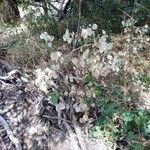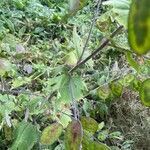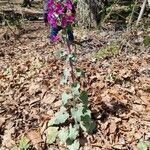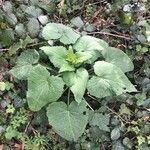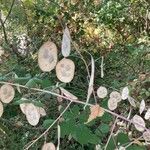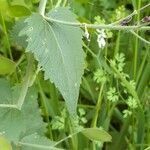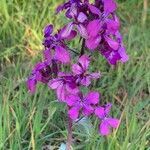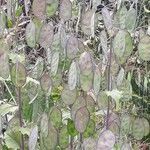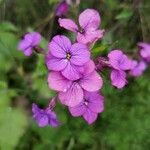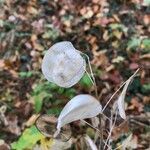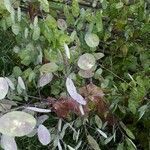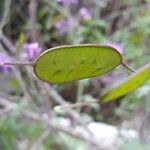Biennial, roots often swollen. Stems erect, leafy, hairy, branching above, to 1 m tall. Lvs cordate, acute, dark green, hairy, bluntly or coarsely dentate; lower lvs petiolate, opposite, 5-10-(20) × 3-5-(15) cm; upper lvs subsessile, alternate, 3-5-(8) × 1.5-3-(4) cm. Racemes to 30 cm long. Sepals hairy, 7-9 × 1.5-2.5 mm. Petals purple, rarely white, 15-22 × 6-8 mm. Silicle elliptic (lanceolate when immature), 2.5-4 × 2-3 cm, obtuse at both ends; carpophore 8-15 mm long; style 5-8 mm long. Seeds dark brown, 5-8 mm diam.
A cabbage family herb. It is an annual or biennial plant. It grows 75-90 cm high and 25-30 cm wide. The leaves are heart-shaped to triangular with coarse teeth around the edge. The flowering stems are loosely branched. The flowers have 4 petals and are purple or white. Many flowers occur in clusters. The seed pods are round with papery outer skins and a white central disk. These are flat and white and look like coins. The seeds are 7-10 mm long by 5-9 mm wide. They are kidney shaped.
Annual to 1 m; cauline lvs short-petioled or sessile; fls 2 cm wide; frs broadly elliptic, rounded at both ends, 3.5–5 cm, two-thirds as wide; 2n=30. Native of se. Europe, occasionally escaped from cult. May, June.
